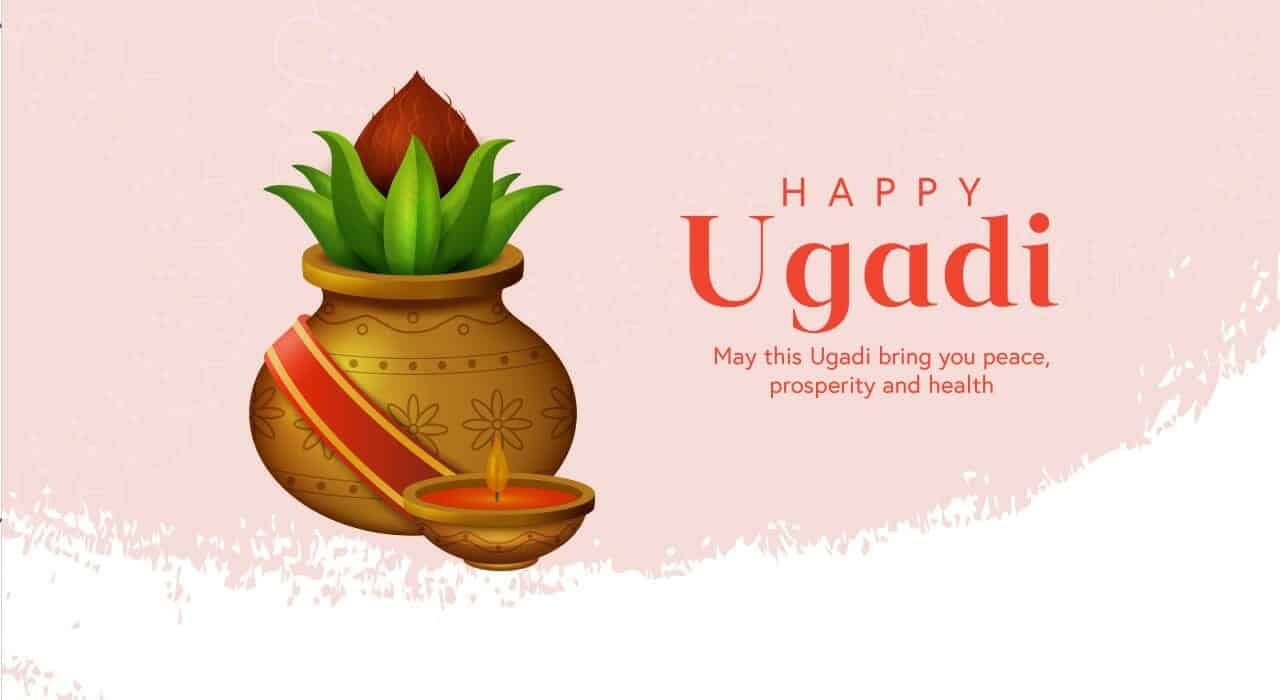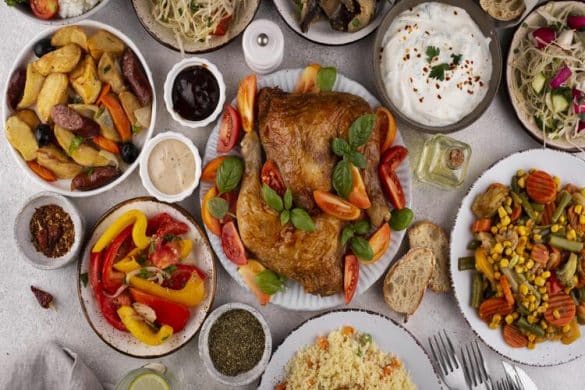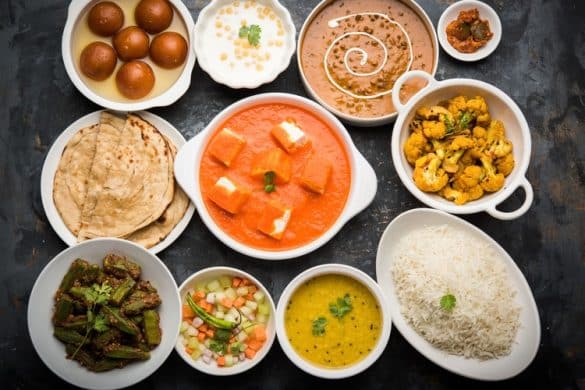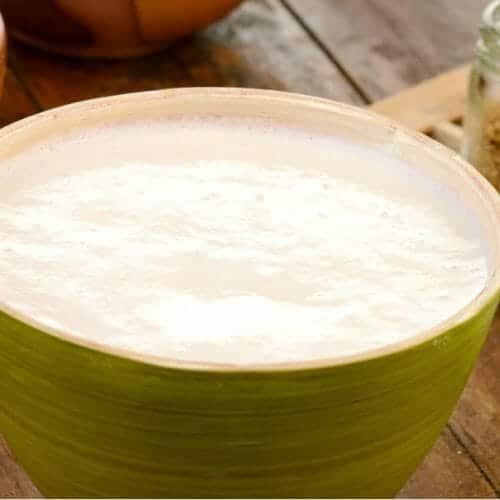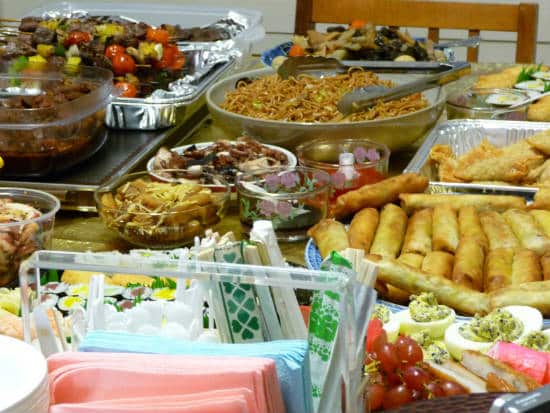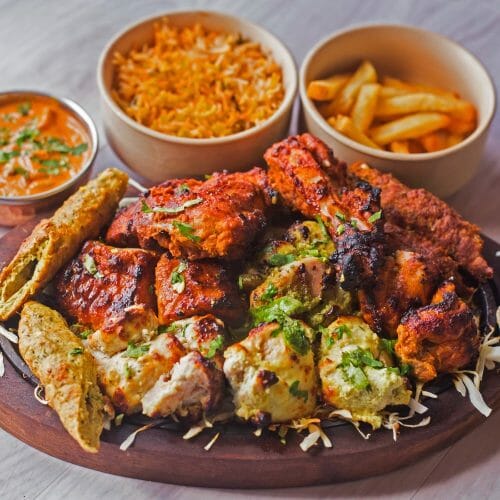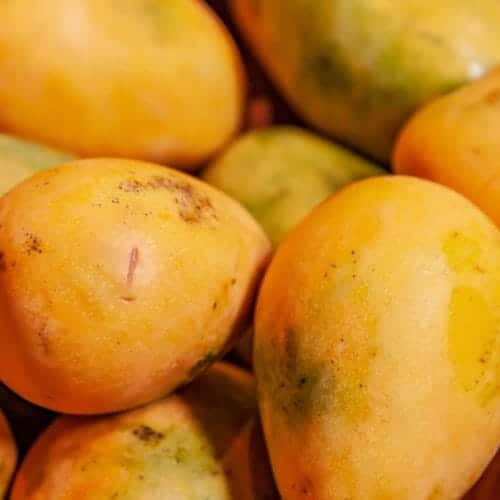Ugadi, also known as the Telugu New Year, is a festival celebrated with great enthusiasm and joy in Andhra Pradesh, Telangana, and Karnataka. According to the Hindu calendar, it marks the beginning of the new year and is a time for new beginnings and fresh starts. The festival falls on April 9, 2024, and is considered one of the most important festivals for the people of these states.
Ugadi is a time for cleaning and decorating homes, buying new clothes, offering prayers, and participating in various festivities and cultural events. It is a time to welcome the new year with open arms and embrace its opportunities and blessings. The festival is celebrated with great devotion, gratitude, and joy. It is a time for family and friends to come together and celebrate.
One of the highlights of Ugadi is the preparation of traditional dishes and delicacies. Special dishes like Ugadi Pachadi, Tamarind Rice, Lemon Rice, Medu Vada, Kosambari, Panakam, Coconut Ladoo, and Kesari are prepared and enjoyed by everyone. These dishes not only tantalize the taste buds but also hold great cultural and symbolic significance.
Overall, Ugadi is a festival that celebrates new beginnings, traditions, and the rich cultural heritage of the Telugu people. It is a time of joy, gratitude, and hope for a prosperous and fulfilling year. Let’s explore the essence of Ugadi and its cultural significance, traditions, and culinary delights.
Key Highlights
- Ugadi is a festival celebrated as the Telugu New Year in Andhra Pradesh, Telangana, and Karnataka.
- According to the Hindu calendar, the festival marks the beginning of the new year.
- Ugadi is a time for cleaning homes, buying new clothes, and offering prayers.
- Traditional practices and rituals include cleaning and decorating the home, buying new clothes, making rangoli, and preparing special dishes.
- Ugadi is celebrated with various culinary delights such as Ugadi Pachadi, Tamarind Rice, Lemon Rice, Medu Vada, Kosambari, Panakam, Coconut Ladoo, and Kesari.
- Festive activities include prayer and puja, community and family gatherings, and participating in cultural events.
The Essence of Ugadi and Its Cultural Significance
Ugadi, also known as the Telugu New Year, holds a special place in the hearts of the people of Andhra Pradesh, Telangana, and Karnataka. According to the Hindu calendar, the festival signifies the beginning of a new year. It is celebrated with great zeal and enthusiasm. Ugadi is derived from the Sanskrit words “yuga”, meaning “age,” and “adi”, meaning “beginning,” signifying the start of a new age or era.
According to Hindu mythology, Ugadi is believed to be the day when Lord Brahma, the creator of the universe, began to create the world. It is said that after meditating for 100 years, Lord Brahma realized his divine origin and purpose and set out to design the universe. Therefore, Ugadi is considered a time of new beginnings and the creation of a new era.
Ugadi is a time for celebration and holds great cultural significance. It is a time for people to reflect on the past year, express gratitude for the blessings received, and set intentions for the coming year. Various rituals and customs mark the festival, followed with great devotion and reverence.
On the day of Ugadi, people wake up early, take a customary oil bath, and wear new clothes to symbolise starting afresh. Homes are cleaned and decorated with mango leaves and colourful patterns called rangoli to welcome the new year and bring good luck. Temples are adorned with flowers, and special prayers and rituals are performed to seek the blessings of the deities.
Overall, Ugadi is a festival that celebrates new beginnings, hope, and the rich cultural heritage of the Telugu people. It is a time to embrace change, set intentions, and welcome the new year with joy and positivity.
The Historical Roots of Ugadi
Ugadi has its roots in the Hindu lunisolar calendar, a combination of the lunar and solar calendars. The festival falls on the first day of the Hindu calendar month of Chaitra, which usually falls in March or April of the Gregorian calendar.
According to Hindu mythology, Ugadi marks the day when Lord Brahma, the creator of the universe, began the creation process. After meditating for 100 years, Lord Brahma realized his divine origin and purpose and set out to design the universe. Ugadi is considered the first day of the creation of the universe and signifies the beginning of a new era.
The festival is celebrated with great devotion and reverence, with people offering prayers and seeking the blessings of the deities. It is a time to reflect on the past year, express gratitude for the blessings received, and set intentions for the coming year. Ugadi is a time of new beginnings and fresh starts, and it holds great significance in the hearts of the people who celebrate it.
Why Ugadi Marks a New Beginning
Ugadi is a celebration of the new year and signifies a new beginning in Hindu traditions. It is believed to have begun a new age or era called the Kali Yuga. According to Hindu mythology, Lord Krishna, the ultimate form and source of the Divine, ended his time on Earth on Ugadi day, signifying the start of the Kali Yuga.
Although the departure of Lord Krishna is considered inauspicious, the Kali Yuga is believed to bring positive changes and opportunities for growth and spiritual development. It is a time for people to reflect on their actions, make amends, and work towards creating a better world.
Ugadi is also a time to let go of the past and embrace the present with hope and positivity. It is a time to leave any regrets, failures, or negativity and start afresh with renewed energy and determination. In every sense, Ugadi marks a new beginning, symbolizing the cycle of life and the opportunity for growth and transformation.
Preparing for Ugadi: Traditional Practices and Rituals
Preparing for Ugadi involves various traditional practices and rituals followed with great devotion and enthusiasm. These practices aim to purify the mind, body, and soul and welcome the new year with positivity and prosperity.
Some traditional practices and rituals include cleaning and decorating the home, buying new clothes, making rangoli, offering prayers, and participating in cultural events. These practices create a festive atmosphere and hold significant cultural and symbolic significance. Let’s delve deeper into these practices and rituals and understand their importance in celebrating Ugadi.
Cleaning and Decorating the Home
Cleaning and decorating the home is an essential part of preparing for Ugadi. A clean and organized home is believed to attract positive energy and blessings. Here are some critical aspects of cleaning and decorating the house for Ugadi:
- Cleaning: A thorough home cleaning removes negative energy and creates a fresh and welcoming environment for the new year.
- Decoration: Homes are decorated with mango leaves, considered auspicious and symbolise fertility and abundance. They are hung at the house’s entrance to invite prosperity and good luck.
- Rangoli: Colorful rangoli patterns are drawn at the house’s entrance using rice flour, coloured powders, or flower petals. Rangoli designs can be intricate and elaborate, showcasing the artistic skills of the house’s women.
- Lighting: Oil lamps or diyas illuminate the home and ward off darkness and negativity. The warm glow of the lamps adds a festive touch to the decorations.
By cleaning and decorating the home, people create a positive and auspicious atmosphere for the celebration of Ugadi. It is a way to welcome the new year with joy and optimism.
Buying New Clothes and Making Rangoli
Buying new clothes and making rangoli are important traditions followed during Ugadi. These customs add to the festive spirit and hold cultural and symbolic significance. Here are some critical aspects of buying new clothes and making rangoli for Ugadi:
- New Clothes: It is customary to buy new clothes for the entire family to wear on the day of Ugadi. New clothes symbolize new beginnings and a fresh start for the new year.
- Rangoli: Rangoli is a traditional way of decorating the house’s entrance. It is created using coloured powders, rice flour, or flower petals. Rangoli designs can be intricate and elaborate, showcasing the artistic skills of the women of the house.
- Symbolism: Rangoli is believed to bring good luck and prosperity. The colours and patterns used in rangoli have deep symbolic meanings and represent various aspects of life and nature.
- Creativity: Making rangoli is a creative process that allows individuals to showcase their artistic skills and add a personal touch to the festive decorations.
Buying new clothes and making rangoli are cherished traditions that bring families together and create a festive ambience. These customs add colour and vibrancy to the celebration of Ugadi.
The Culinary Delights of Ugadi
Ugadi is not only a time for celebration and traditions but also a time for indulging in culinary delights. Special dishes are prepared to mark the occasion and are enjoyed by everyone. Ugadi’s culinary delights include various traditional recipes that are delicious and culturally significant. Let’s explore some of these mouth-watering dishes and the unique ingredients that make them special.
Ugadi Pachadi: A Flavorful Medley
Ugadi Pachadi is a popular dish prepared during Ugadi and holds great cultural significance. It is a unique medley of flavours that symbolizes the different experiences of life. Here are some key aspects of Ugadi Pachadi:
- Ingredients: Ugadi Pachadi is made with six different ingredients that represent the six tastes of life – sweet, salty, spicy, sour, astringent, and bitter. These ingredients include neem flowers (bitter), jaggery (sweet), tamarind (sour), raw mango (spicy), salt (salty), and chilli powder (astringent).
- Symbolism: Ugadi Pachadi symbolizes the different emotions and experiences of life. It teaches us to accept and balance the various aspects of life, whether sweet or bitter.
- Preparation: The ingredients are mixed to create a flavorful and unique chutney. The combination of different tastes creates a delicious and complex flavour profile.
Ugadi Pachadi is a culinary delight and a reminder to embrace the ups and downs of life with grace and acceptance. It is a dish representing Ugadi’s essence and the philosophy of balance and harmony.
Tamarind Rice | Puliyodharai
Tamarind Rice, or Puliyodharai, is a traditional dish prepared during Ugadi. It is a tangy and flavorful rice dish loved by people of all ages. Here are some key aspects of Tamarind Rice:
- Ingredients: Tamarind Rice is made with cooked rice, tamarind pulp, and a blend of spices and seasonings. It is usually tempered with mustard seeds, curry leaves, and other aromatic spices.
- Flavorful: Tamarind Rice has a unique tangy and spicy flavour from tamarind pulp and spices. It is a perfect balance of sourness, spiciness, and sweetness.
- Special Dish: Tamarind Rice is a special dish during festivals and auspicious occasions. It is often prepared as an offering to the deities and a temple prasadam.
Tamarind Rice is a delicious dish and holds cultural and religious significance. It is a must-have dish during Ugadi and adds to the festive spirit of the celebration.
Lemon Rice (Tangy, Flavorful Rice)
Lemon Rice is another popular dish prepared during Ugadi. It is a tangy and flavorful rice dish loved for its simplicity and delicious taste. Here are some critical aspects of Lemon Rice:
- Ingredients: Lemon Rice is made with cooked rice, lemon juice, and a blend of spices and seasonings. It is usually tempered with mustard seeds, curry leaves, and roasted peanuts.
- Tangy Flavor: Lemon Rice gets its tangy flavour from the freshly squeezed lemon juice. It adds a refreshing and zesty taste to the dish.
Lemon Rice is a versatile dish that can be enjoyed as a main course or a side dish. It is a favourite among children and adults and a must-have dish during Ugadi.
Medu Vada
Medu Vada is a popular South Indian snack often prepared during festivals and special occasions like Ugadi. It is a deep-fried fritter made from a batter of soaked and ground urad dal (black gram) and spices. Here are some key aspects of Medu Vada:
- Ingredients: Medu Vada is made with urad dal, soaked and ground to a smooth batter. The batter is then seasoned with spices like cumin seeds, black pepper, and curry leaves.
- Crispy and Fluffy: Medu Vada is known for its crispy exterior and soft, fluffy interior. The batter is shaped into small doughnuts and deep-fried until golden brown and crispy.
- Serving: Medu Vada is typically served with sambar (a lentil-based vegetable stew) and coconut chutney. The combination of flavours and textures makes it a delightful snack.
Medu Vada is a favourite among South Indians and is a must-have dish during festivals like Ugadi. It is a perfect snack to enjoy with a hot cup of tea or coffee.
Kosambari
Kosambari is a traditional South Indian salad often prepared during festivals and special occasions like Ugadi. It is a refreshing and healthy dish with soaked split moong dal (yellow lentils), cucumber, coconut, and various spices and seasonings. Here are some key aspects of Kosambari:
- Ingredients: Kosambari is made with soaked split moong dal, finely chopped cucumber, grated coconut, coriander leaves, lemon juice, and a blend of spices, such as green chillies, mustard seeds, and asafoetida.
- Crunchy and Nutritious: Kosambari is known for its crunchy texture and fresh flavours. It is packed with nutrients and an excellent protein and fibre source.
- Most Important Ugadi Recipe: Kosambari is considered one of the most important recipes for Ugadi. It is often prepared as an offering to the deities and a temple prasadam.
Kosambari is a light and refreshing dish that adds flavours to the Ugadi feast. It is a perfect accompaniment to the main course and is loved by people of all ages.
Panakam
Panakam is a traditional drink prepared during Ugadi and is loved for its sweet and refreshing taste. It is made with jaggery, water, cardamom, and lemon juice. Here are some key aspects of Panakam:
- Ingredients: Panakam is made with jaggery, water, crushed cardamom, and a few drops of lemon juice. It is a simple and easy-to-make drink that can be prepared in minutes.
- Sweet and Refreshing: Panakam has a sweet and refreshing taste, making it a perfect thirst quencher on hot summer days. The jaggery adds a natural sweetness, while the cardamom and lemon juice add flavour.
- Symbolic Significance: Panakam is considered an auspicious drink and is often prepared as an offering to the deities during festivals. It is believed to have cooling properties and is served to guests during festive celebrations.
Panakam is a must-have drink during Ugadi and is enjoyed by people of all ages. It symbolizes hospitality, joy, and celebration.
Coconut Ladoo
Coconut Ladoo is a popular sweet delicacy prepared during Ugadi. It is made with grated coconut, sugar, and cardamom powder. Here are some key aspects of Coconut Ladoo:
- Ingredients: Coconut Ladoo is made with freshly grated coconut, sugar, and a pinch of cardamom powder. The mixture is shaped into small round balls and is often garnished with nuts like cashews or almonds.
- Sweet and Nutty: Coconut Ladoo has a sweet and nutty flavour, making it a perfect dessert for those with a sweet tooth. The aroma of cardamom adds a pleasant fragrance to the sweet.
- Sweet Delicacy: Coconut Ladoo is a special sweet delicacy during festivals and auspicious occasions. It is often prepared as an offering to the deities and a temple prasadam.
Coconut Ladoo is a favourite among children and adults and a must-have sweet during Ugadi. It is a delightful treat that melts in the mouth and leaves a lingering sweetness.
Kesari
Kesari, or Sheera or Sooji Halwa, is a popular sweet dish from Ugadi. It is made with semolina (sooji), ghee, sugar, and cardamom powder. Here are some key aspects of Kesari:
- Ingredients: Kesari is made with semolina, ghee, sugar, water, and a pinch of cardamom powder. The mixture is cooked until the semolina absorbs the liquid, forming a thick, pudding-like consistency.
- Rich and Fragrant: Kesari has a rich and fragrant flavour, thanks to ghee and cardamom. The aroma of cardamom adds a pleasant fragrance to the sweet.
- Served on Special Occasions: Kesari is a unique sweet dish often prepared during festivals and auspicious occasions. It is served as a prasadam in temples and is also a popular choice for celebratory feasts.
Kesari is a beloved sweet dish enjoyed by people of all ages. It is a simple yet delicious dessert that adds a touch of sweetness to the festive celebrations of Ugadi.
Festive Activities and How to Participate
Ugadi is not just about delicious food and traditions but also about festive activities and celebrations. Here are some key aspects of the festive activities and how you can participate:
- Prayer and Puja: Ugadi is a time for prayer and puja. You can participate by visiting a temple, offering prayers, and seeking blessings from the deities.
- Community and Family Gatherings: Ugadi is a time for family and friends to come together and celebrate. You can participate by organizing or attending community gatherings, cultural events, and feasts.
- Cultural Events: Various cultural events, such as music and dance performances, are organized during Ugadi. You can participate by attending these events and immersing yourself in the festive spirit.
Participating in these activities not only adds to the joy and spirit of Ugadi but also allows you to connect with your community and heritage. It is a time to celebrate and create lasting memories with your loved ones.
Prayer and Puja: Invoking Divine Blessings
Ugadi festivities are complete with prayers and pujas that invoke divine blessings. The ritual holds immense cultural and spiritual significance, symbolizing gratitude and seeking blessings for a prosperous year ahead. Families come together to offer prayers, seeking the blessings of Lord Brahma for a new beginning. The aroma of incense fills the air as prayers are recited, creating a serene and joyous atmosphere. Traditional practices like decorating the entrance with mango leaves and neem flowers add to the divine ambience, enhancing the spiritual experience of welcoming the new year with positivity and devotion.
Community and Family Gatherings
During Ugadi, community and family gatherings play a vital role in fostering togetherness and joy. It is a time for loved ones to come together, share festive meals, exchange gifts, and participate in cultural activities. These gatherings symbolize unity and the spirit of celebration, strengthening bonds among family members and communities. From offering prayers together to engaging in traditional rituals, these gatherings create lasting memories and a sense of belonging. Sharing laughter, love, and traditional delicacies during these gatherings truly encapsulates the essence of Ugadi.
Ugadi in Different Regions: A Tapestry of Traditions
Ugadi is celebrated with different names and traditions in various regions of India. Here are some key aspects of how Ugadi is celebrated in different regions:
- Karnataka’s Yugadi: In Karnataka, Ugadi is known as Yugadi. It is celebrated enthusiastically and involves various rituals and customs, such as preparing special dishes like bevu bella (a mixture of neem leaves and jaggery).
- Andhra Pradesh and Telangana’s Ugadi: In Andhra Pradesh and Telangana, Ugadi is celebrated with traditional rituals, prayers, and the preparation of special dishes like Ugadi Pachadi and Bobbatlu.
Ugadi is a celebration of cultural diversity and heritage. It is an opportunity to learn about the traditions and customs of different regions. It is a tapestry of traditions that weaves together the rich fabric of Indian culture.
Karnataka’s Yugadi
In Karnataka, Yugadi is celebrated with much pomp and enthusiasm. It marks the beginning of a new year in the Hindu calendar and is a time for new beginnings and fresh starts. One of the key rituals is the preparation of traditional dishes like Obbattu (Puran Poli) and Mavinakayi Chitranna (raw mango rice). Homes are adorned with mango leaves and colourful patterns drawn at the entrance. People greet each other with ‘Ugadi Subhakankshalu’ to spread joy and good wishes. Karnataka’s Yugadi embodies the essence of tradition and community, bringing people together to rejoice in the spirit of a new year.
Andhra Pradesh and Telangana’s Ugadi
Celebrated with much pomp and joy in Andhra Pradesh and Telangana, Ugadi is a festival deeply rooted in Hindu traditions. Telugu people usher in the new year with elaborate rituals and festivities. According to the lunisolar calendar, the day of Ugadi marks the beginning of a new age. Special delicacies like Ugadi Pachadi, made with a mix of flavours symbolizing life’s various experiences, adorn the tables. Families come together to share joy and blessings, making it a time for community bonding and reflection on new beginnings. Bevu bella, a unique chutney, is prepared to represent the mixture of bitter and sweet experiences in life.
Conclusion
Ugadi, the vibrant festival of new beginnings, holds deep cultural roots and traditions. From cleaning and decorating homes to savouring delicious culinary delights like Ugadi Pachadi and Coconut Ladoo, every ritual signifies renewal and joy. Embrace the festive spirit by participating in prayers, pujas, and community gatherings to invoke blessings for prosperity. Explore the diverse regional flavours of Ugadi in Karnataka, Andhra Pradesh, and Telangana, each weaving a unique tapestry of customs. Have questions about Ugadi? Discover what sets it apart, how non-Hindus can join the festivities, and ways to celebrate Ugadi from anywhere in the world. Join the jubilant Ugadi celebrations with your loved ones and immerse yourself in this enriching cultural experience.
Frequently Asked Questions
What is unique about Ugadi celebrations compared to other New Year celebrations?
According to the Hindu calendar, ugadi celebrations are unique because they mark the beginning of a new year. The festival is celebrated with various rituals, traditions, and special dishes specific to Telugu culture and heritage. It is a time for new beginnings and fresh starts.
Can non-Hindus participate in Ugadi festivities?
Ugadi festivities are inclusive and open to people of all religions and backgrounds. It is a time for celebration, gratitude, and new beginnings, and everyone is welcome to participate and enjoy the festivities. Ugadi is a beautiful opportunity to experience the rich cultural heritage of the Telugu people.
How can someone celebrate Ugadi away from India?
Even if you are away from India, you can still celebrate Ugadi by creating a festive atmosphere in your home. You can prepare traditional dishes, decorate your home with mango leaves and rangoli, and participate in virtual celebrations through online communities and events. It is a time to connect with your roots and celebrate the new year.
Is Ugadi only for Telugu people?
While the Telugu community widely celebrates Ugadi, it is not limited to Telugu people. It is a festival celebrated by people of different regions, religions, and backgrounds. It is a time to embrace India’s cultural diversity and celebrate together.
Is Gudi Padwa and Ugadi the same?
Gudi Padwa and Ugadi are both celebrated as the new year in different regions of India. Gudi Padwa is celebrated in Maharashtra, while Ugadi is celebrated in Andhra Pradesh, Telangana, and Karnataka. Although there are regional variations, both festivals mark the beginning of a new year and are enthusiastically and joyfully celebrated.

